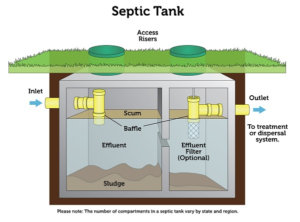Malibu Pest Control involves methods for removing or preventing infestations of insects, rodents, birds and other organisms that interfere with human activities. Eradication is rarely an objective in outdoor environments, but prevention and suppression are common goals.
Biological pest control uses natural enemies to suppress insect populations. These include parasites, pathogens and nematodes. Pheromones and juvenile hormones can also be used.

Pest identification is a crucial first step in any pest control program. Pests often leave clues that can help with their diagnosis, including damage to plants or structures they’ve infested, as well as feeding indicators. In some cases, signs of a pest can also be seen in the environment or environment around the plant, such as nutrient deficiencies or changes to soil composition.
Properly identifying a pest can make your pest control efforts more effective and less costly. Pest identification should be done down to the species level whenever possible because even different members of the same family, genus or order may have significantly different behaviors and damage characteristics.
Identifying pests down to the species level also allows for better use of approved pesticide products. Many insect pests are resistant to one type of chemical or another, so identification to the species can help you find an alternative product. For example, the beet armyworm Liriomyza trifolii may not respond to commonly used insecticides for control because of its tolerance or resistance. Similarly, the cabbage maggot flies infecting cruciferous vegetables are resistant to several commonly used insecticides, so identification to the genus (Bacillus thuringiensis) or species (Cameroon striped cabbageworm) can lead you to find more effective control options.
Knowing how to identify a pest can be helpful for your business too. Insects like cockroaches, ants and beetles can be mistaken for one another, so it’s important to know what kind of pest you are dealing with in order to find the right commercial pest control treatment.
For example, a swarm of house centipedes may actually be a group of Argentine ant nymphs looking for their first meal after pupating. And a beetle infestation may be a sign of rodent activity that can cause property damage and health hazards such as hantavirus, leptospirosis, Salmonella, and more.
If you have a mystery pest, contact your local county extension office or your pest management professional for assistance. They can analyze a physical specimen or image of the pest and provide pest identification results as well as recommendations for control.
Pesticides
Pesticides are chemicals that can be used to kill or control unwanted plants. They may be natural or man-made and can be organic or inorganic. All pesticides are toxic to some extent, so their safe use requires special knowledge and precautions. The label on any pesticide container lists a number of important information, such as safety instructions, warnings, first aid procedures, environmental hazards, storage and disposal. Never mix pesticides; doing so could result in an unpredictable chemical reaction. Wear protective clothing, such as gloves and a mask, when handling or applying pesticides. Store and dispose of all pesticides in a secure, locked area away from children and pets.
Many pesticides poison fish, birds and other wildlife that don’t directly consume or “play” with the targeted plant. They also pollute air, water and soil, contaminating the entire ecosystem. The contaminated soil can then be passed along the food chain to humans and other animals. Pesticides may also disrupt the microbial activity that makes the soil healthy for growing plants.
Some pesticides are very fast acting and break down quickly, while others linger in the environment for days, weeks or even longer. The length of time they remain in the environment affects their ability to kill or control the pests that they target.
When choosing a pesticide, make sure it is specifically designed for the pest that you are trying to control. Look for the pest’s name on the product label, and be sure to select a pesticide that is registered for the specific type of plant you are treating.
If you have any questions about a particular pesticide, ask a knowledgeable local expert for assistance. University Extension offices and professional pesticide applicators are two good resources to turn to for help.
Keep in mind that a pesticide is only a short-term solution to an immediate problem. It is often the underlying cause of the pest issue that needs to be addressed, such as poor planting or mulching methods, overwatering or stress from weather and climate conditions. Addressing these problems will help you avoid having to use pesticides in the future.
Baits
Baits are an important part of many pest control programs. They are easy to apply and monitor, can be a good alternative to more intrusive barrier treatments and can be used in conjunction with them. A number of different bait products are available, each with its own unique characteristics and advantages. Some baits are more palatable than others and some have specific target species that require special care. It is important to read the label of each product and understand how and where it should be used.
The use of baits to control rodent populations can be extremely effective. Rodents can become “habituated” to the presence of bait stations, making them less prone to scavenging. The amount of rodenticide in each block or pellet bait can be very low, meaning that consuming just a small piece can kill a rodent. This makes it important to refresh the bait often to keep the target population reduced and to ensure that non-target rodents are not poisoned as well.
There are a variety of gel and powder baits that can be used to control cockroaches. They are generally injected into cracks and voids where cockroach activity is observed (e.g. fecal smears). Some bait products have been formulated as ‘crack and crevice’ formulations. They are designed to be inserted into tight spaces and may not be as palatable as gel baits, but they can still be very effective.
It is important to carefully select the type of bait that is best suited to the situation and the environment. Some baits are more suitable for indoor application than outdoor, and some have differing levels of toxicity to non-target animals and other insects.
It is also vital to use the appropriate protective gear when handling any bait product. Wearing gloves, a respirator and goggles is essential, particularly when working with rodenticides or baits, to minimise exposure to the toxic chemicals involved. It is also a good idea to keep a bottle of waterless alcohol-based hand rub handy after working with any bait, as it can help to quickly decontaminate hands.
Prevention
A pest problem can be far easier to deal with when it is prevented from happening in the first place. A combination of an in-depth understanding of pest behavior, routine property inspections and prompt use of preventive measures can help avoid a major infestation. Prevention is a far more cost-effective option than reactive treatments, which require more extensive and frequent applications, as well as extra costs such as cleanup and damage to inventory.
Structural prevention focuses on blocking pest entry points to buildings and structures. This approach typically includes sealing cracks, crevices and other openings larger than a pencil, and installing screens and barriers to keep pests out. It also involves maintaining cleanliness standards inside and out, with strict garbage disposal practices, keeping clutter and debris to a minimum and using a cleaning schedule that removes food, water and shelter sources for pests.
Plant and soil care practices can discourage pests by limiting their availability of the nutrients they need to grow. These include good sanitation, proper watering and fertilization, removing infested or diseased plants, growing competitive plants and employing cultural controls such as weeding, soil solarization and heat treatment. Other cultural strategies include encouraging natural enemies, introducing beneficial organisms and planting pest-resistant plants.
Pests like rodents, cockroaches and insects can cause health problems by spreading diseases, contaminating food or aggravating asthma and other respiratory conditions. In addition, their droppings can spread Salmonella and other food-borne pathogens and irritate skin and eyes.
Regular inspections by a trained pest control specialist can spot early signs of potential pest infestations and prevent these problems from becoming full-blown infestations. This approach is less expensive than reactive treatment programs and provides peace of mind to homeowners as they can avoid costly and disruptive pest treatment. Identifying and addressing pest-attracting conditions before they lead to pests can also help protect a home or business’s value and reputation. This can bring a smile to facility and quality assurance managers, as well as upper management, who want to avoid product recalls, rejection of product shipments by customers and other issues that can hurt the bottom line.








